By Luciana Queratti
A 1:50-hour trip from Santiago towards the south of Chile, flying parallel to the Andes Mountains, brings you to Chiloé.
An archipelago in the Pacific Ocean, almost isolated and with low temperatures.
One day it rains; the next, it pours, but it opens up to an eye-popping sun on the third day.
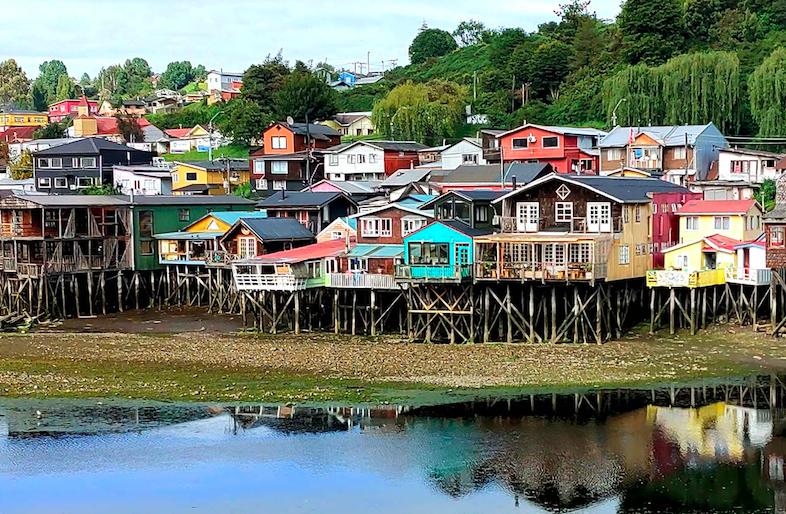
A place with typical wooden houses, sixteen world heritage churches, and myths and legends that are still deeply rooted.
With over 200 kinds of potatoes and a clove of giant garlic nicknamed elephant. Of wild nature, lakes, and rich wetlands.
Seafood in abundance, sea lions, dolphins, and penguins.
And many species of birds – no wonder Chiloé is derived from “chil-hué”, which in Mapuche language means place of seagulls.
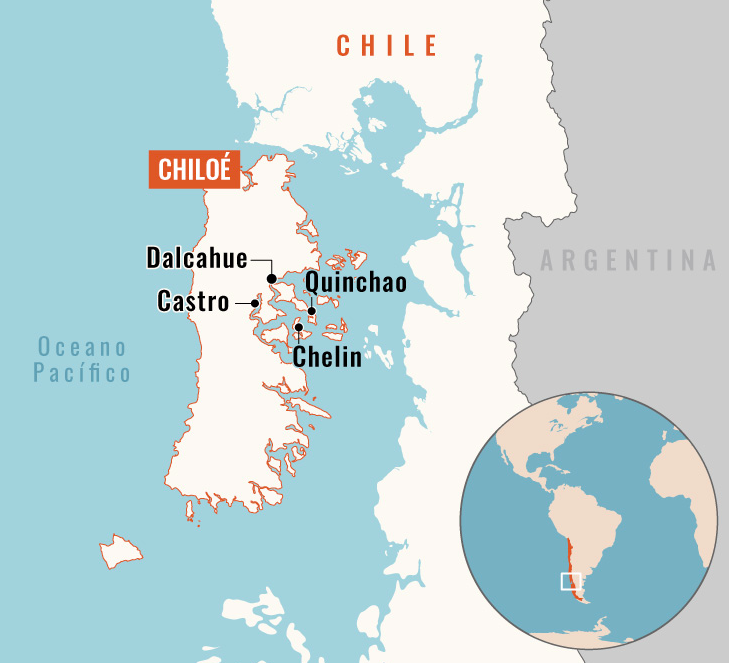
THE STILTS OF CASTRO
The archipelago is formed by 40 islands, which total 9,200 km² – six times the area of São Paulo city.
The largest is the Grand Island of Chiloé (Ilha Grande), with 8,300 km² and just over 150,000 inhabitants (90% of the Chiloetan population).
Castro, the capital of the province of Chiloé, was founded in 1567 and is home to the archipelago’s main postcard, the colorful stilt houses by the sea, which are home to traditional warehouses, hotels, and craft fairs.
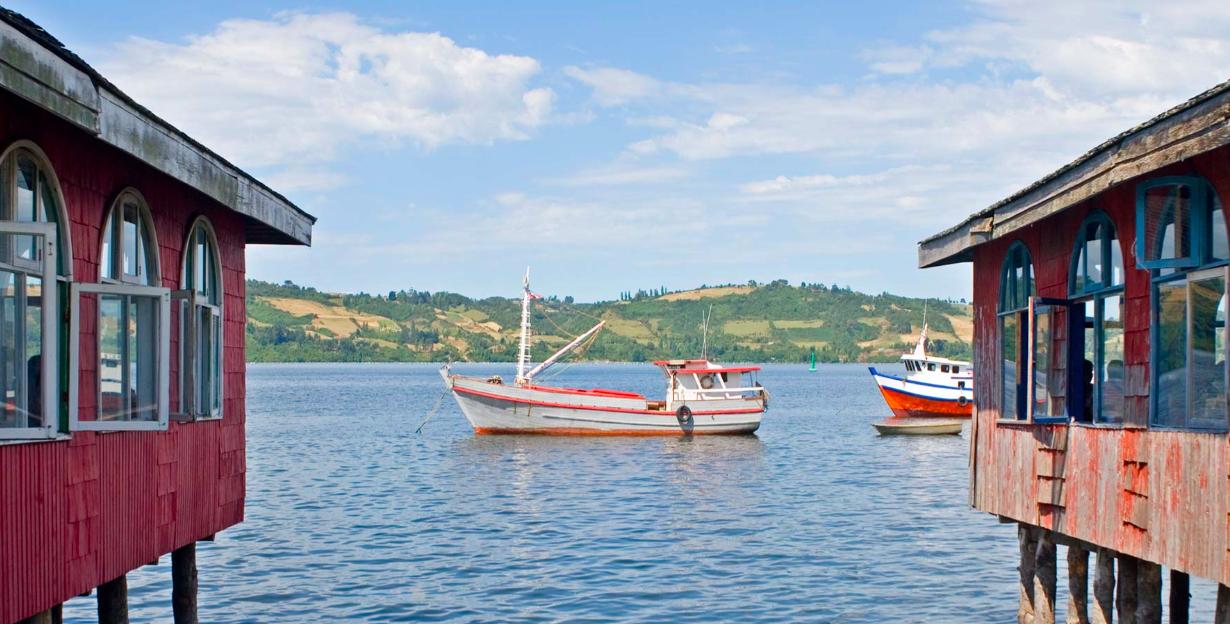
A day trip to Castro is enough to learn about its main attractions, such as the Gamboa district’s stilt houses.
It is one of the two best-known and best-preserved groups of stilt houses in the capital, especially because it had to be rebuilt after the Valdívia earthquake, the largest tremor ever recorded in May 1960.
It’s worth visiting:
- the Museum of Modern Art;
- the Yumbel Market, with its fresh fish and typical products;
- a shipyard to understand how the boats used on the island are made;
- and the Church of San Francisco is one of the 16 in Chiloé that have been declared World Heritage Sites because of their common characteristics: a wooden structure, usually larch (which can last more than 100 years), without metal nails and with a dome in the shape of an inverted boat, with fitting techniques used in boat building.
Castro is half an hour’s drive from Mocopulli airport, which receives flights from the Chilean capital almost every day of the week during the high season, from September to March, when temperatures range from 17 to 22ºC during the day and from 10 to 12ºC at night.
In the other months, with cold temperatures that turn negative, flights are scarce, and most hotels are closed.
On Ilha Grande, half an hour from Castro and the airport, is Dalcahue, a name that refers to the dalcas, a type of local boat.
In the village, you can visit another World Heritage site, the Nossa Senhora das Dores church, from 1858.
In addition, you can shop for typical items in the commercial streets and have an ice cream or a beer in front of the sea.
And also tasting Chilean food, such as milcao (a cookie made with grated potatoes), cazuela chilota (a stew with meat, rice, and potatoes), and curanto, the most traditional dish on the island.
The curanto is made with seafood, native potatoes, pork or chicken, and sausages, prepared slowly between nalca or maqui leaves (the fruit of which makes a beautiful jelly), over firewood and stones placed in a hole dug in the ground about a meter and a half deep.
At the Cocinería Dalcahue, a boat-shaped market on stilts with small restaurants, a plate of curanto costs $9,000 (about US$11).
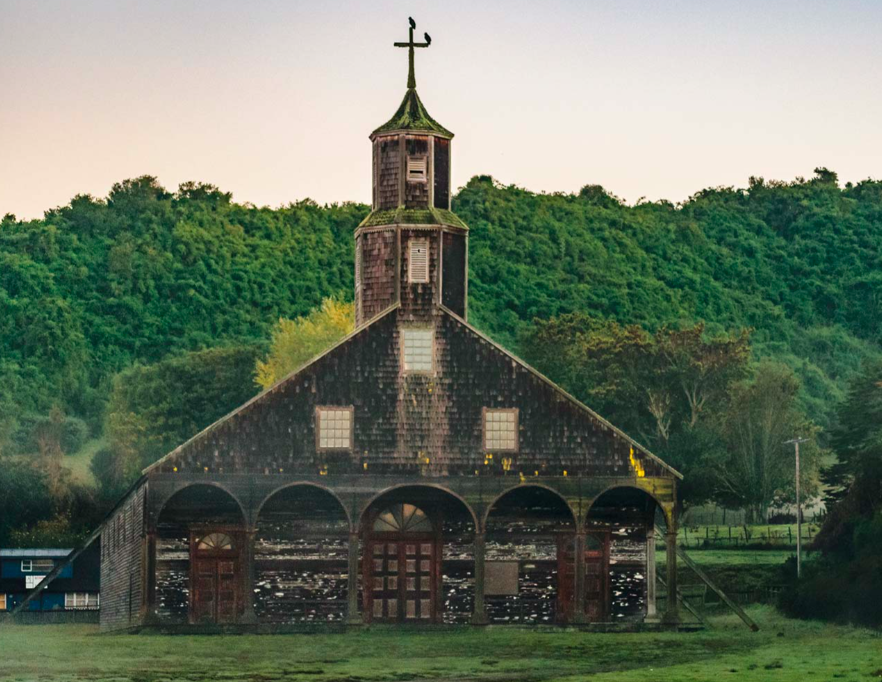
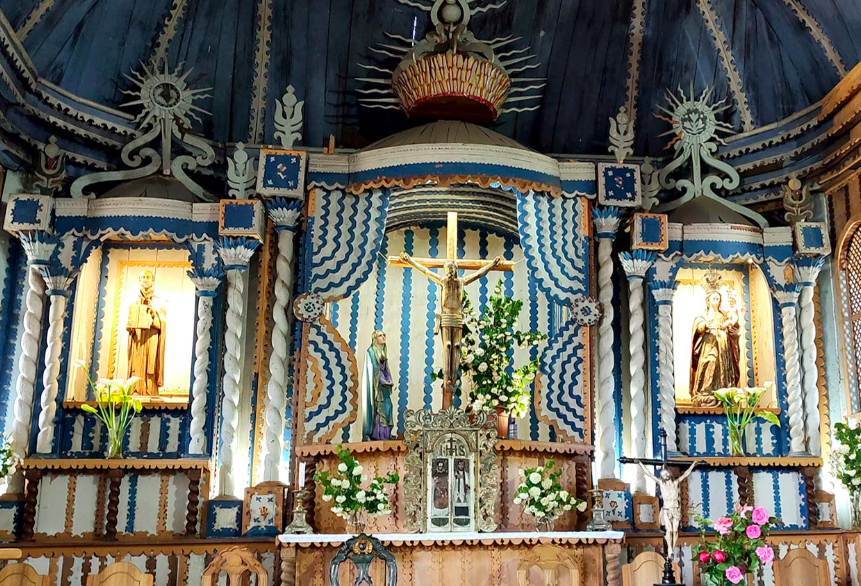
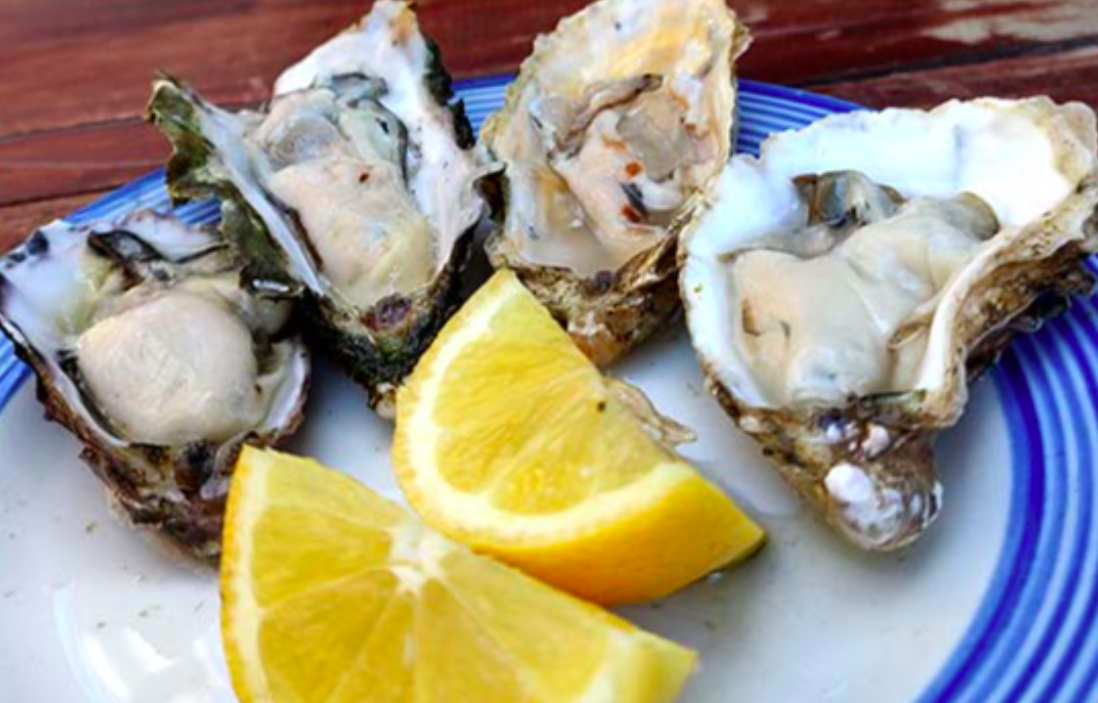
The establishment is next to the town’s traditional handicraft market on the community’s main avenue, Pedro Montt.
QUINCHAO: RELIGION, HISTORY, BIRDS AND OYSTERS
From Dalcahue, you can reach Quinchao, the second-largest island in the archipelago.
It takes only five minutes by ferry boat through the Dalcahue Channel.
The crossing costs 3,500 Chilean pesos (US$4.4) for cars but is free for pedestrians.
Quinchao is divided into two communes: the one of the same name and Curaco de Vélez, connected by well-maintained asphalt roads and almost always overlooking the Inland Sea, formed by the waters of the Pacific Ocean between the islands.
Both communes follow the pattern of the other islands in the archipelago, with the delicate facades of the houses, churches, and shops covered by tejuelas, which are pieces of wood in various shapes that, superimposed, look more like lace covering the walls – an aesthetic, but also a functional, feature to alleviate the cold.
In the municipality of Quinchao is the town of Achao and, in front of its main square and two blocks from the sea, the oldest heritage church in the archipelago (and one of the oldest in Chile), from 1730, in baroque style and dedicated to Santa Maria del Loreto.
The back of the church houses the Museum of Evangelization, one of 18 in the archipelago, which tells the story of the process of catechization by the Spanish, in the 16th century, of the local indigenous groups – the huilliches, a group from the Mapuche culture, who lived from agriculture, and the chonos, who were nomadic fishermen.
The museum also holds memories of the customs and culture of Chiloé, from weaving with the first looms to the cuisine and musical instruments, such as the three-stringed chilota violin – which used to be made of cat and chicken guts, as explained by guide Felipe Lopez.
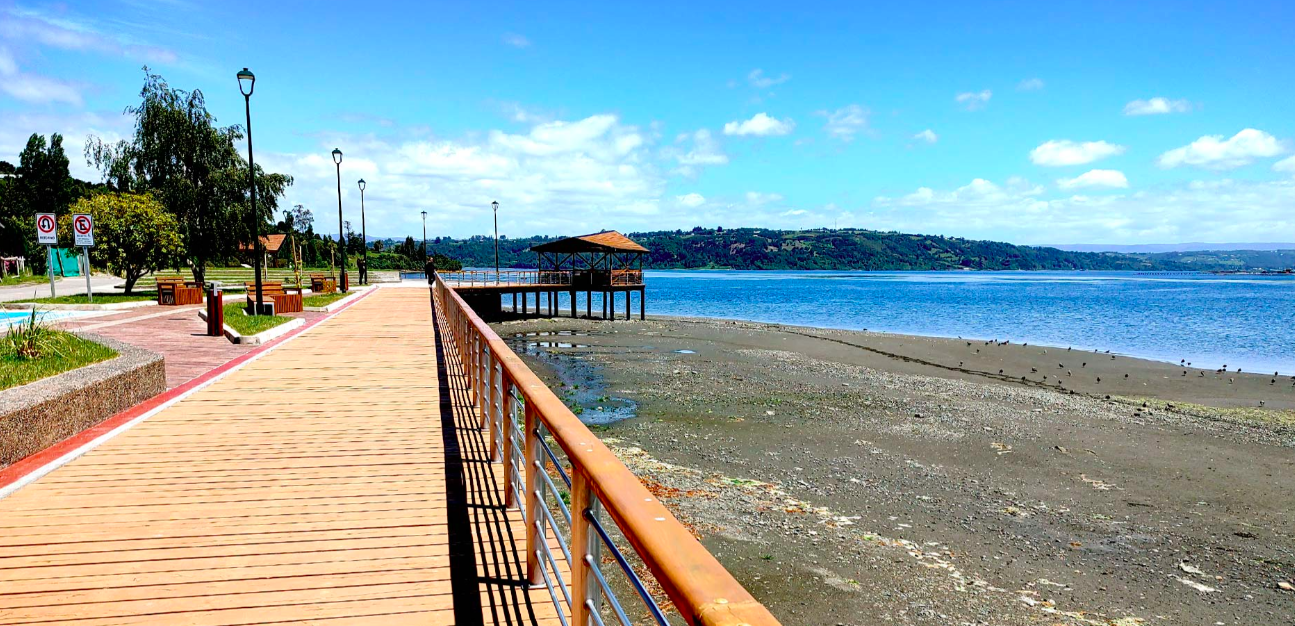
In Curaco de Vélez, the good idea is to walk along Del Mar Avenue and spend some time on a wooden walkway from where you can observe flocks of quero-queros (the queltehue, as they say in Chile).
By the way, for the bird lover, a pair of binoculars is essential. You only have to drive along any road in the archipelago to come across flocks of birds in flight or perched on small wetlands.
Some of these birds are migratory, such as the straight-billed or common zarapito, which arrives in Chiloé in November from Alaska and spends 5 to 6 months there before returning north in March, sometimes stopping in Brazil, as explained by guide Matias Cornejo.
Still in Curaco, on the beachfront and thinking about an appetizer at the end of the day, some restaurants are known for their specialty in seafood, especially oysters, such as Los Troncos, where a unit costs 1,000 Chilean pesos (a little over US$1.2).
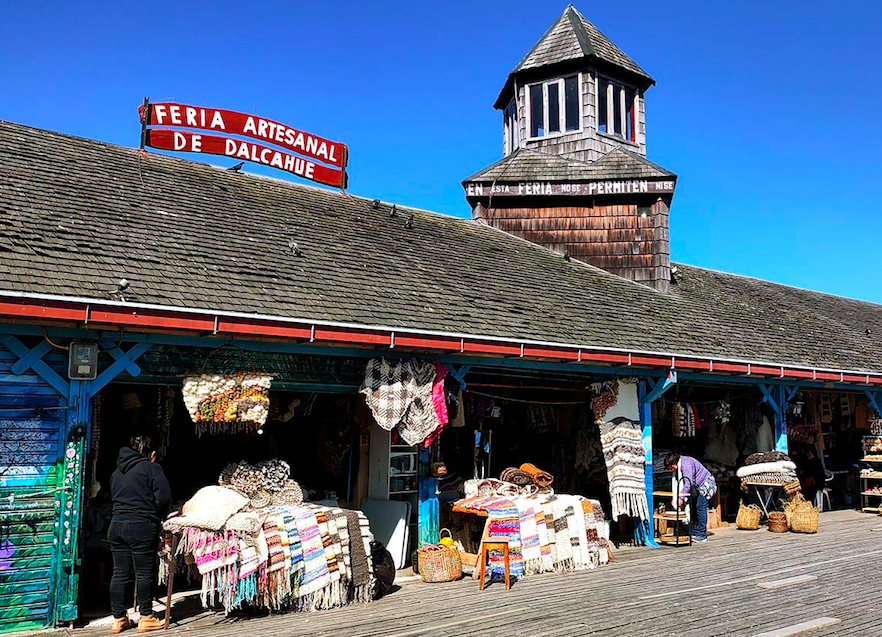
In both Achao and Dalcahue, markets and fairs offer a complete portrait of the strong Chilean tradition of handicrafts made with sheep’s wool in its natural color or dyed with leaves, bark, roots, fruits of plants, and even clay, for darker shades.
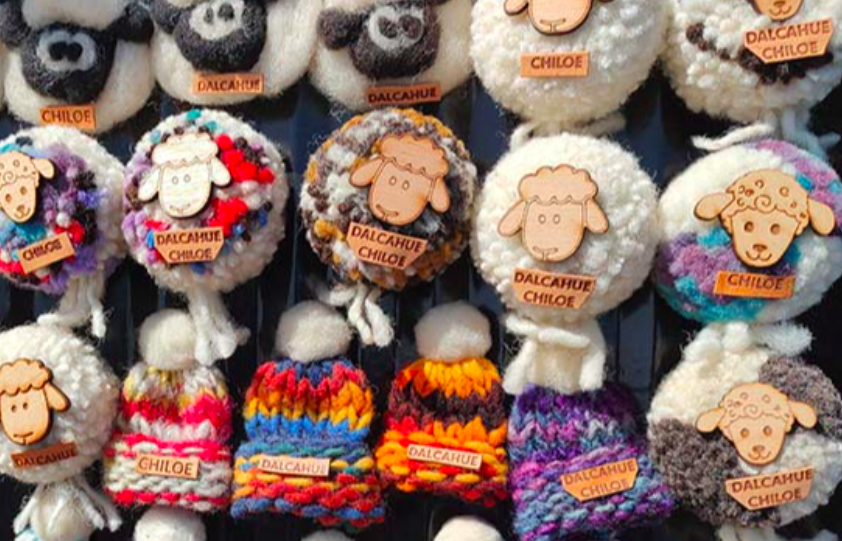
The weaving techniques, which value the care for nature, come from the archipelago’s ancestral peoples and are passed on from generation to generation, especially by the indigenous women.
And they can be appreciated in these fairs and markets while the artisans make vests, sweaters, caps, scarves, and slippers reinforced for the region’s cold.
Wooden articles, especially household goods and souvenirs, are also available at the stands.
According to data from 2022, about 13% of the Chiloetan population identifies itself as indigenous. There are 2,185,792 people.
This number has been decreasing year by year, and according to tour guide Maria José Gavia, who is part of this group, makes people like the Chiloetans, with very specific roots and traditions, seek to reinvent themselves to keep their customs alive.
And not only in handicrafts. One of the concerns in Chiloé is to preserve the lifestyle based on ancestral methods of producing their own food without chemical fertilizers and rotating crops to preserve the land.
One of the promoters of this way of life is the huilliche farmer Sandra Naiman, 43.
After being laid off from the salmon industry for eight years, she has been taking care of a 5-hectare farm inherited from her maternal grandparents in the village of Changüitad in Quinchao.
The detail: alone.
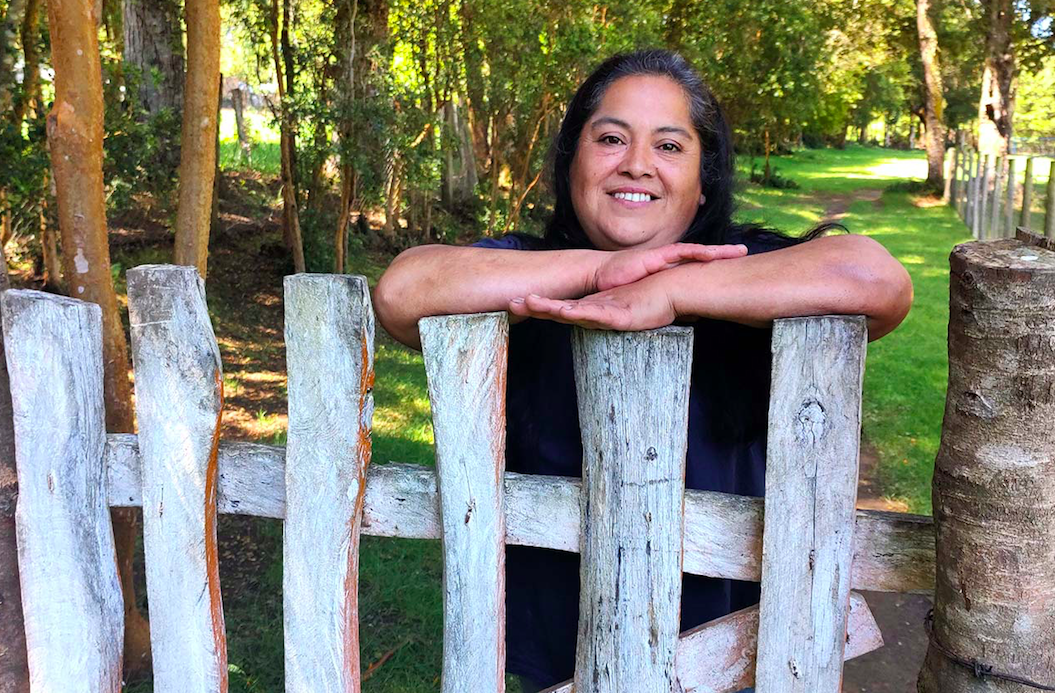
In telling how her work is, she asks not to notice the state of her fingernails. And she justifies: “The land produces, but you have to put your hand on it.
Sandra learned her job with the village elders and today teaches the younger ones the organic production techniques she uses on her property.
She grows vegetables in the greenhouse and outdoors, some varieties of potatoes and chilota garlic, or giant garlic, softer than the common garlic she sells to a company that exports it in paste form to the Spanish market.
Sandra also raises sheep, pigs, and chickens, grows almost a hundred varieties of flowers, and has a viewpoint on her land that would make any citizen living in the big cities envious.
CHELÍN: THE LEGENDS IN THE HEART OF THE ARCHIPELAGO
Another place worth visiting is Chelín, an island full of history, with 12 km² and about 250 inhabitants, which can be reached by boat through the Inland Sea in an hour and 40-minute trip (if you leave from the Tierra Hotel, which offers the tour).
On the way to the island, it is very common to see fish and shellfish farms in the waters, mostly from the salmon industry in countries like Norway, attracted by the low cost of production due to the lack of regularization of the activity in Chile, as explained by the guide Maria José Gavia.
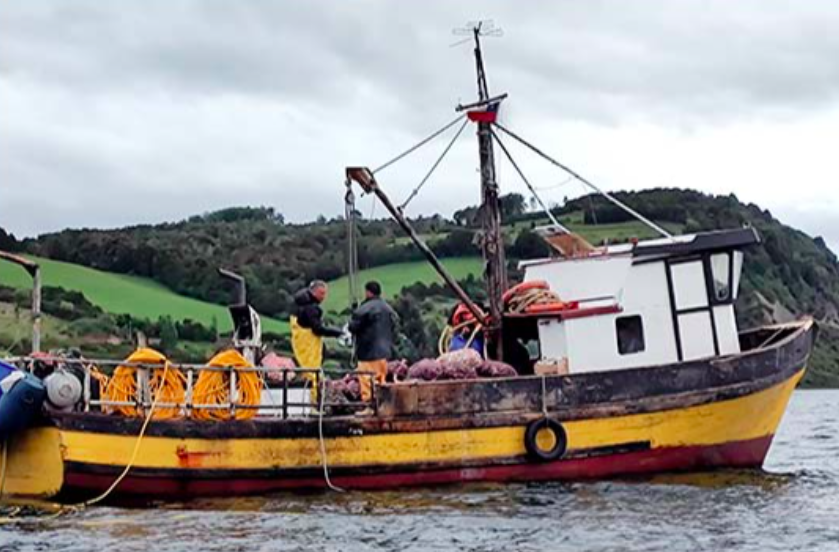
You can also come across one or another boat of artisanal fishermen fishing for seafood, sea bass, trout, and mussels.
In Chelín is another World Heritage Site church, Our Lady of the Rosary, with a neoclassical style and columns painted in marble.
The temple’s history is told in a small museum attached, where you can also learn about the techniques used in its construction without conventional nails.
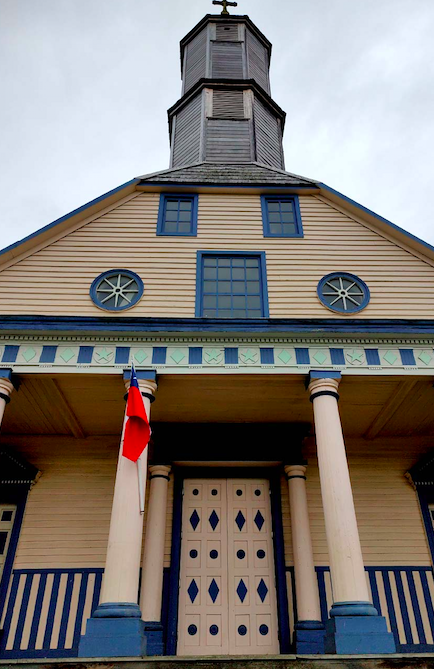
However, the most interesting thing on the island is perhaps 200 meters from the church: a cemetery with tombstones in the shape of small wooden houses typical of the village, built by the old locals to protect their dead from would-be witches.
Legend has it that one of the tests to become a witch was to go to the cemetery, remove the skin from the left side of the chest to the belly of the corpse, preferably a woman, tan the skin in herbs and make a blanket out of it, the “makuñ,” which would allow it to fly.
Whether or not one believed in the legendary danger, says guide Ninoska Galarce, when in doubt, the best thing to do was to reinforce the loved one’s new quarters by setting up the miniature house over the grave.
This is how the residents of Chelín thought up until a few decades ago.
HIKING, KAYAKING, AND ADVENTURE
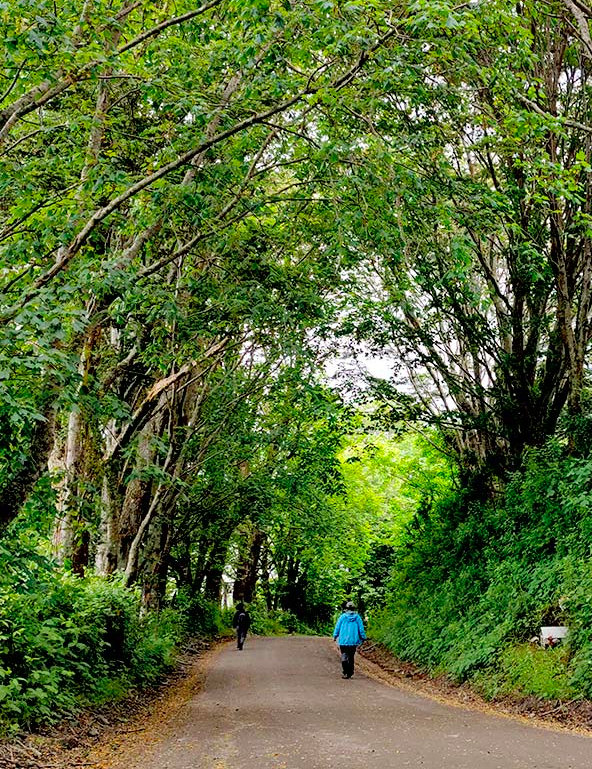
In the waters between Chelín and neighboring Quehui (this island is a little larger, with 700 inhabitants), it is possible to go kayaking or out in small motorized boats amidst families of sea lions and ducks, as well as seagulls on their glides.
Depending on the season and your luck, you may encounter dolphins or penguins.
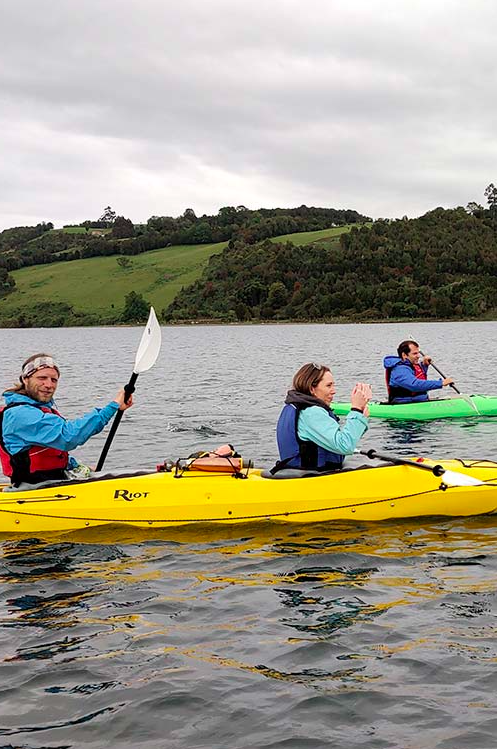
On the island, you can also walk through the woods on a short trail behind the cemetery, passing by a lookout point with a panoramic view of the island or along the beach to learn more about the local houses and way of life.
This is just one example of the outdoor activities available in the archipelago, which also has more than a dozen routes through forests and pampas, in half-day or full-day tours, of easy and moderate levels, and options for the adventurous in search of trekking.
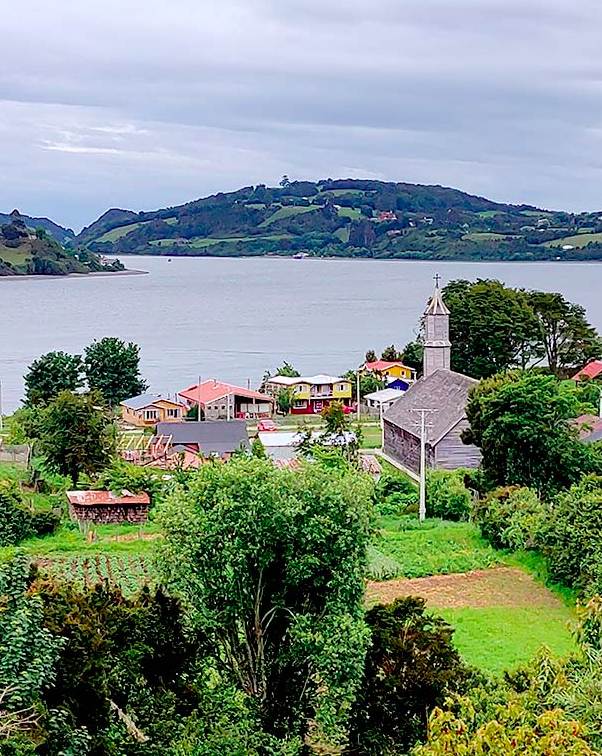
The recommendation for this type of tourism in the archipelago is to bring layered clothing, a waterproof jacket, and a windbreaker in your luggage.
But it is also good to be prepared for the sun, with a cap or hat, a good pair of sunglasses, and sunscreen, renewed whenever possible.
Companies and hotels, such as Tierra Chiloé, offer excursions from the Chilean Tierra Hotels chain, which has all-inclusive packages with hiking, biking, horseback riding, and sailing aboard the Wuilliche, the hotel’s boat (which takes you to Chelín, for example).
The Tierra Chiloé hotel – whose chain also has units in the Atacama Desert and Patagonia – is located in the village of San José, with about 300 inhabitants, 40 minutes from the Mocopulli airport (there is van transfer) and half an hour from downtown Castro.
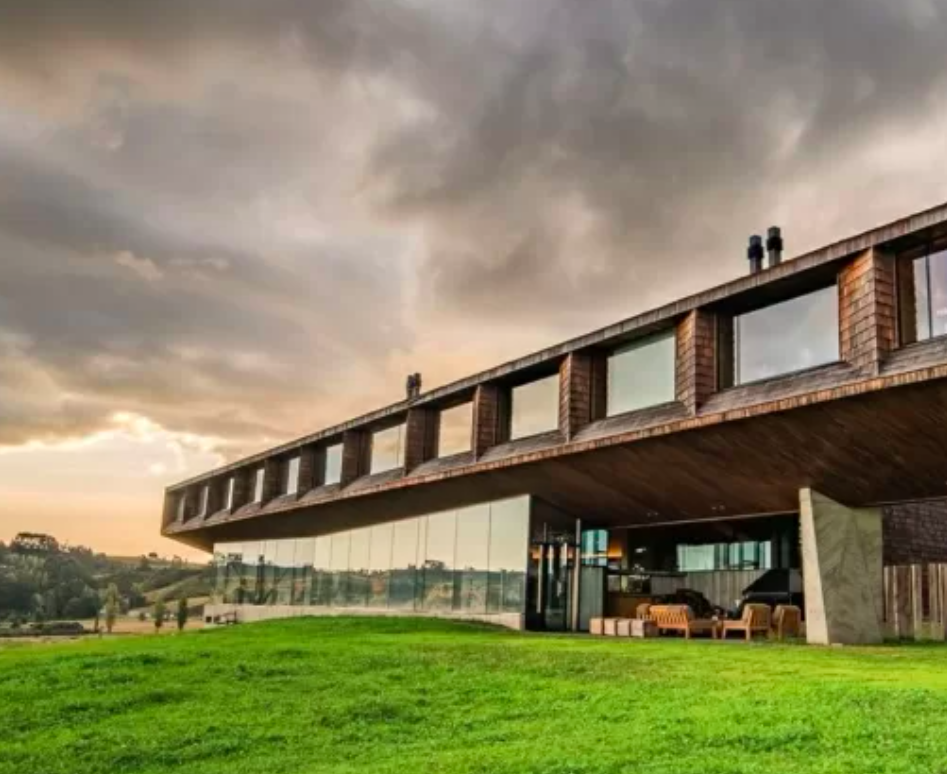
The traditional stilts of the island inspire its architecture, and it faces the Pullao wetlands.
You can see the Andes Mountains and the Michimahuida volcano in the background.
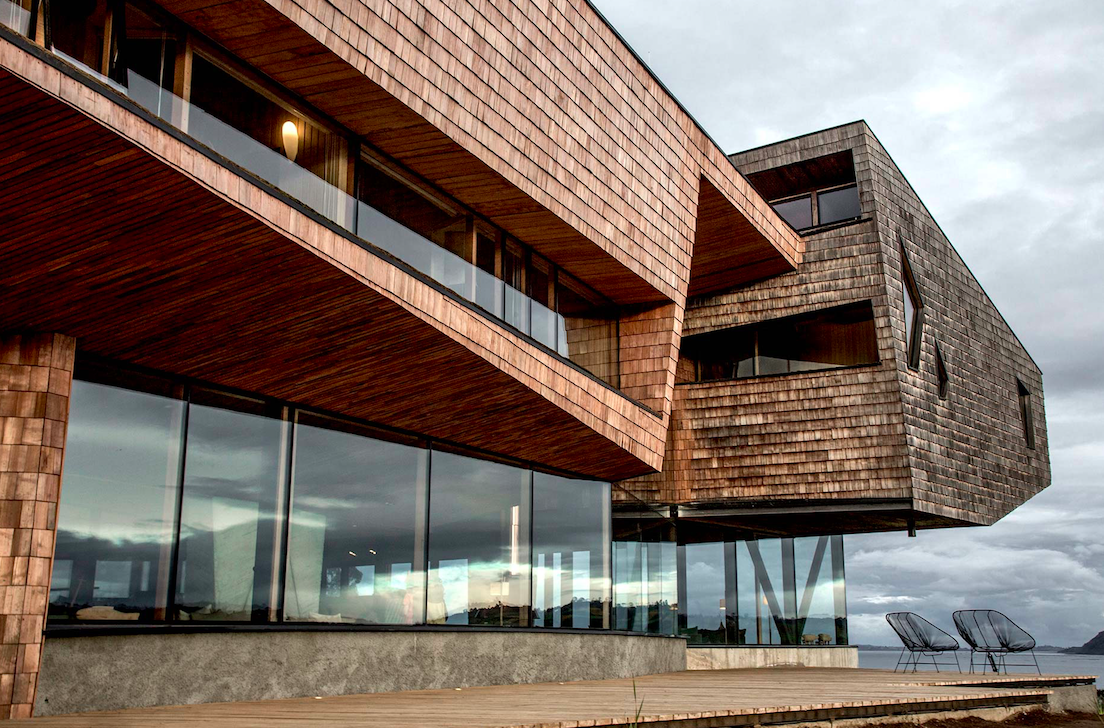
The lodge’s architecture was designed precisely to adapt to the unstable climate of Chiloé, using the same local techniques to take advantage of ventilation in times of heat and preserve heat during the cold.
The entire exterior was made with local wood, and the facade’s texture is inspired by the traditional tejuelas, wooden roof tiles that have become a cultural reference throughout the country.
Tierra Chiloé has packages from 3 to 7 nights and several room modalities – all all-inclusive: suite (single and double), Rilán apartment (single and double), and Pullao apartments (single, double, and children).
Prices for the 2022-2023 season (valid until April 30, 2023) range from US$3,000 a (3 nights) to US$14,300 (7 nights).
For more information, visit the hotel’s website.
With information from UOL

